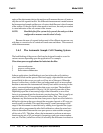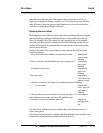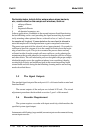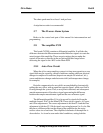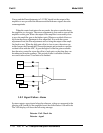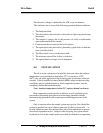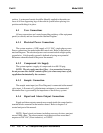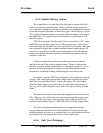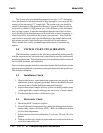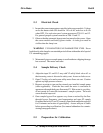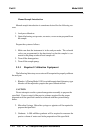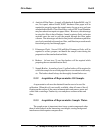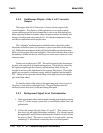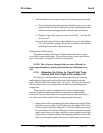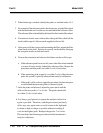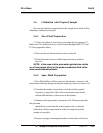
1-22 Part III
Part III Model 6600
Teledyne Analytical Instruments
The system safe vent should be equipped to accept a 1-1/2” drain pipe.
Also, the diameter of the drain should be large enough to carry away the full
capacity of the incoming 1/2” sample line. The system safe vent should be
vented to atmosphere at the panel, but the user’s system will have to include
a trap and or scrubber (if H
2
S present, etc.) if the effluent is to be discharged
into a sewage system. It must be remembered that the vent to be is at floor
level; flooding of the installation area will result in the event of stoppages, or
when drain levels are not below the system vent connector. Also, note this
vent is used to accept the auto-zero backflashing of the sample and as such
high release pressure, liquid and/or gas velocities will be encountered.
Never obstruct this vent by any human personnel means to eliminate any
injuries.
5.0 SYSTEM START-UP/CALIBRATION
The information contained in the following subsections deals primarily
with the steps necessary before the total system can be used for continuously
monitoring oil in water. This information involves installation checks, electrical
checks, fluid dynamics, and calibration.
Due to variations in water and oils as encountered under field conditions, certain
adjustments must be made to optimize system performance for the specific site.
This includes calibration.
5.1 Installation Check
1. Observe that power, signal and alarm connections are properly made
and that the system is properly grounded. Refer to Installation Section
of manual and to Outline and Interconnection Drawings.
2. Inspect the external sample delivery system, including sample pump
(when applicable), sample take up point, and source of water sample.
3. Confirm that the recorder is of the correct type.
5.2 Electronics Check
1. Check that all PC boards are in place.
2. Turn off ultrasonic homogenizer by rotating the homogenizer potenti-
ometer fully counter-clockwise (OFF). Refer to calibration section
5.6.5 for final adjustment.
3. Switch on electronics and confirm that 15 volt, and -230 volt, 10 volt is
present.
4. With an oscilloscope, check test points and reed switch action with air
or oil-free water in the cell.



